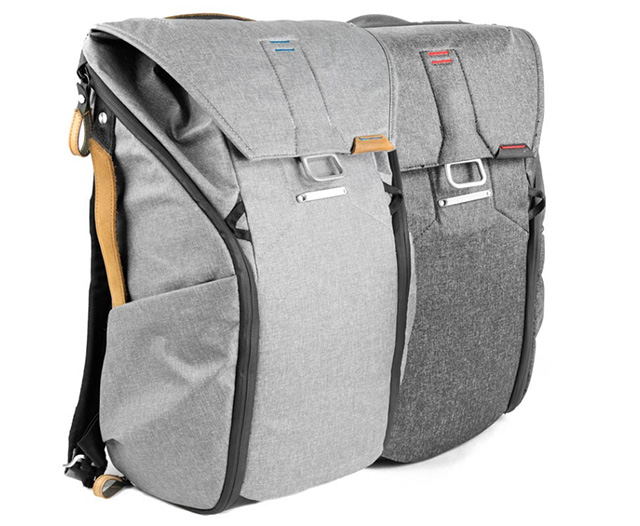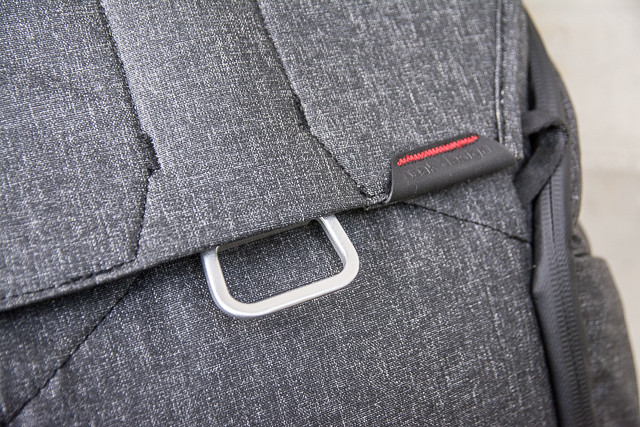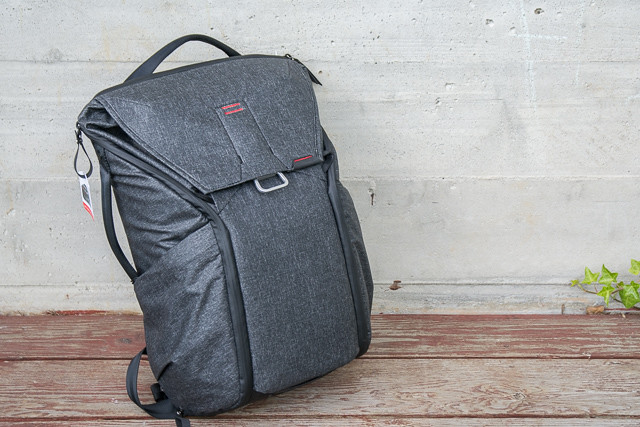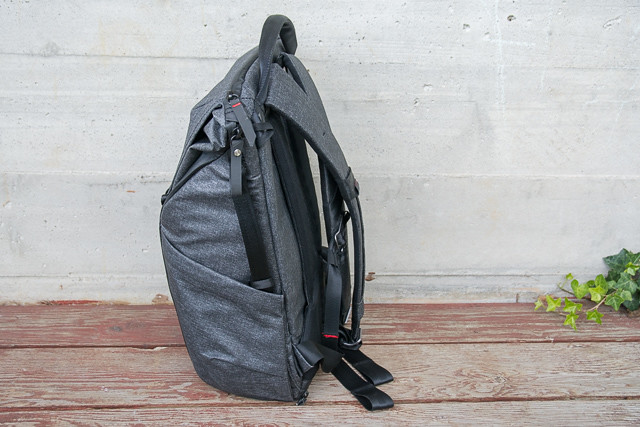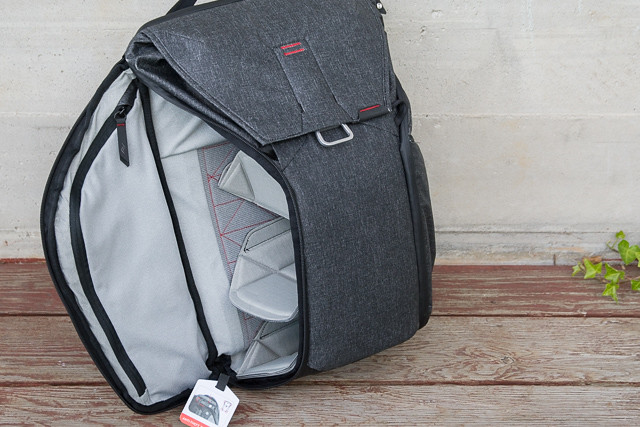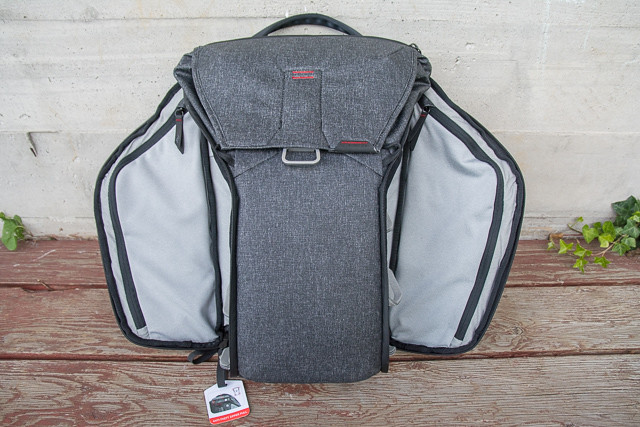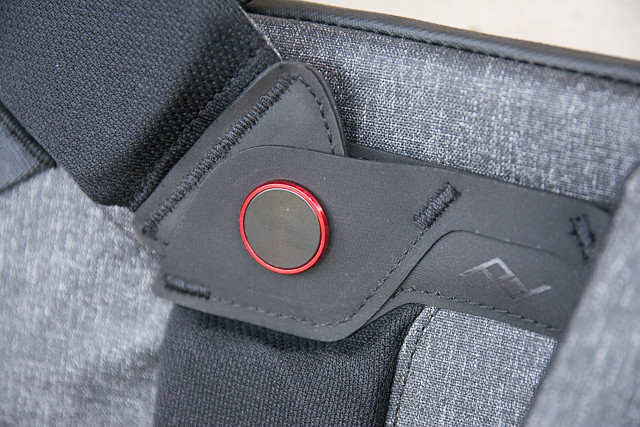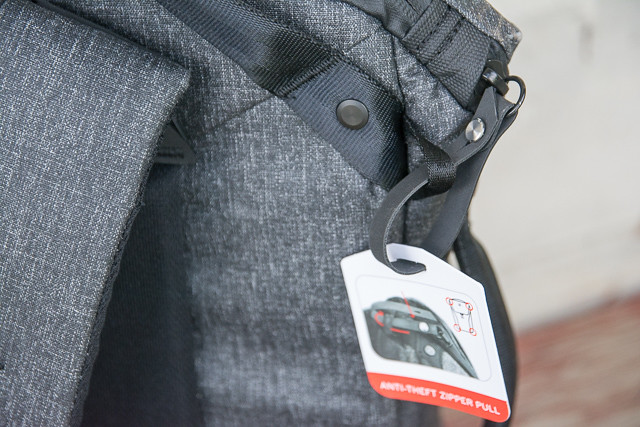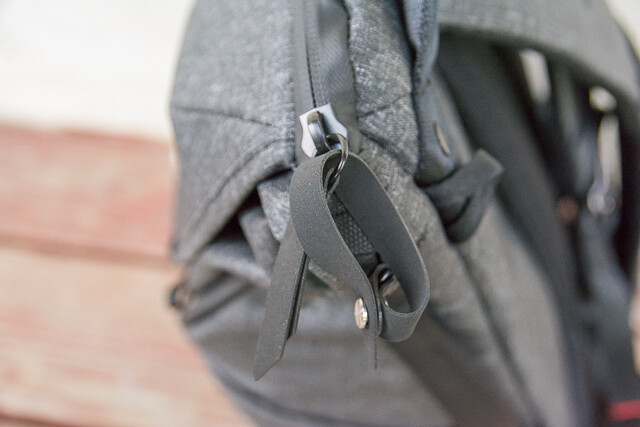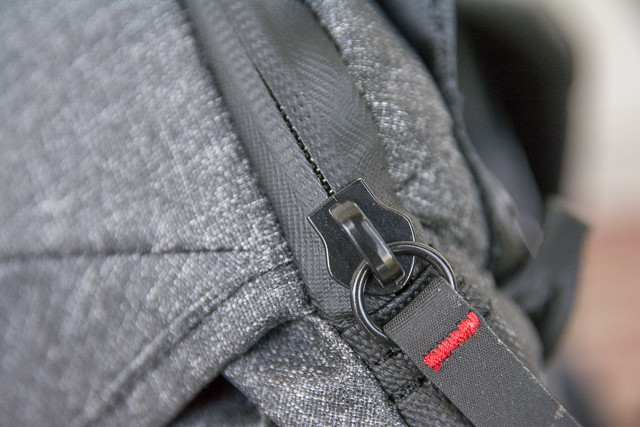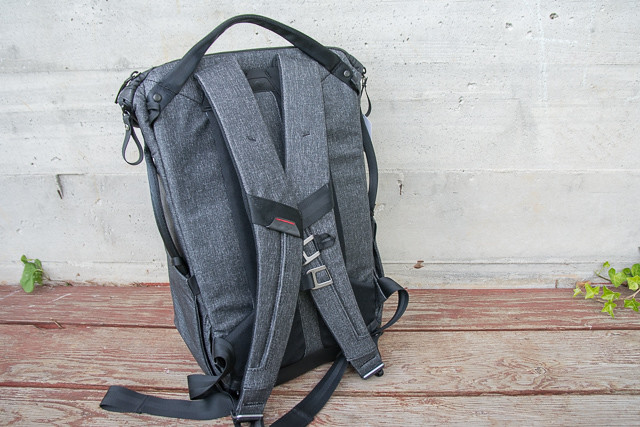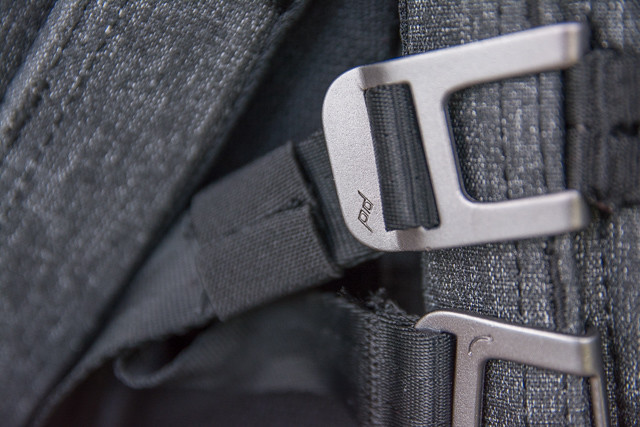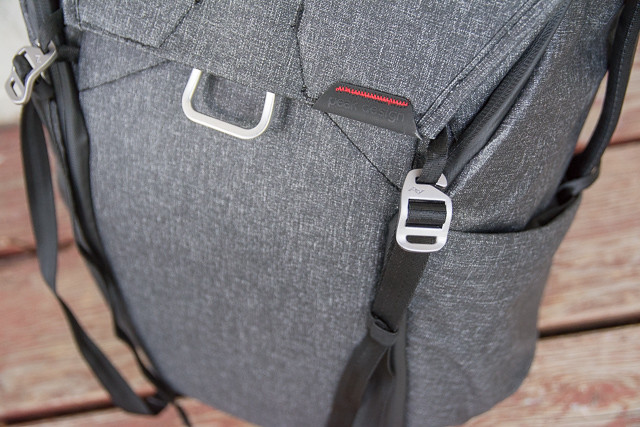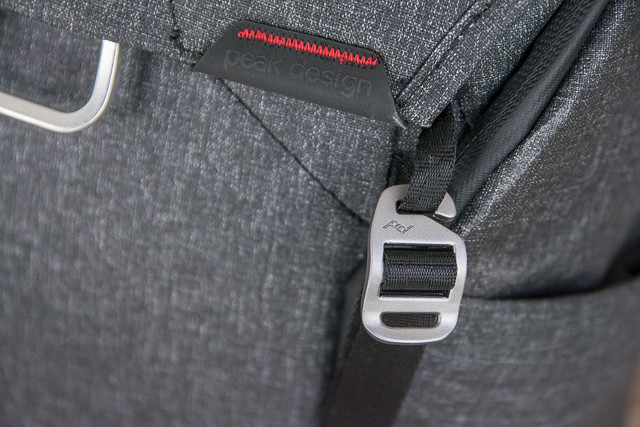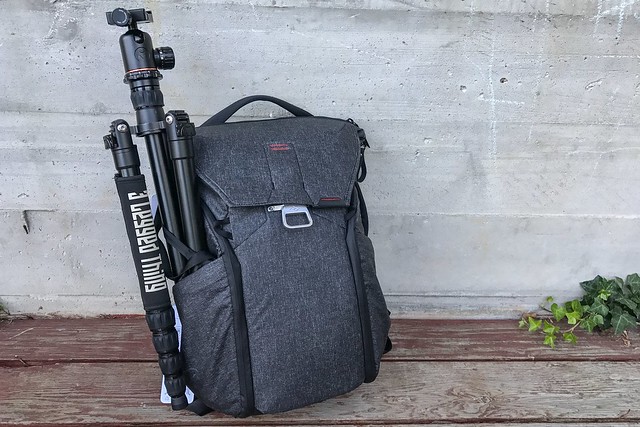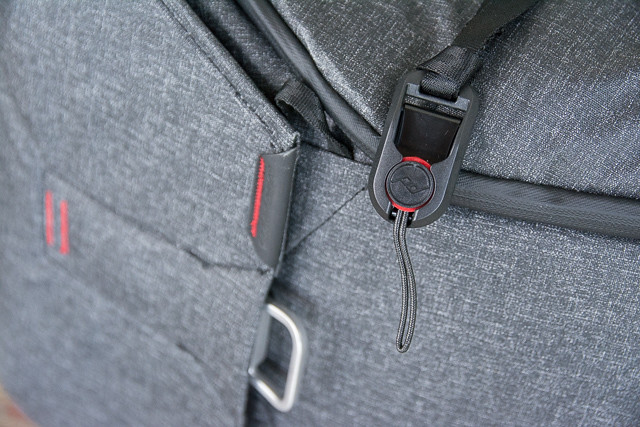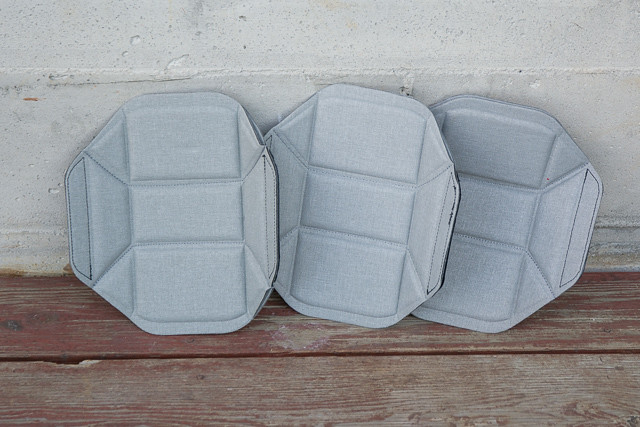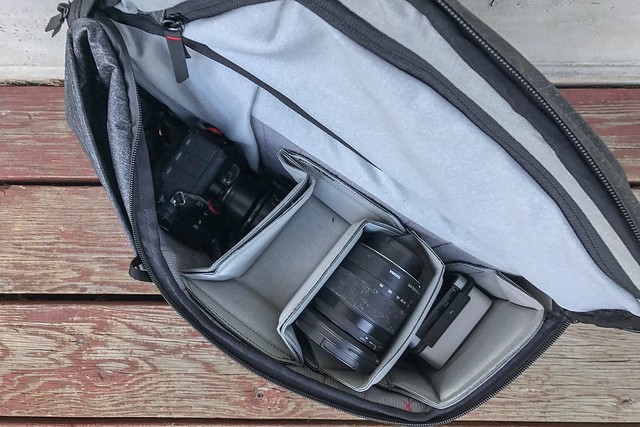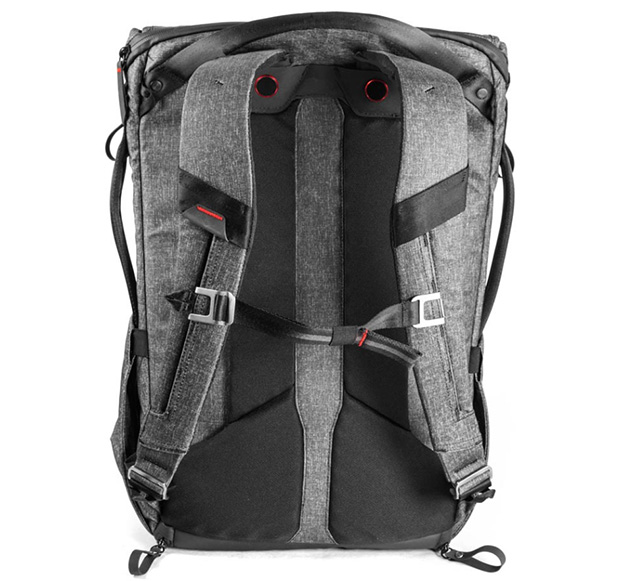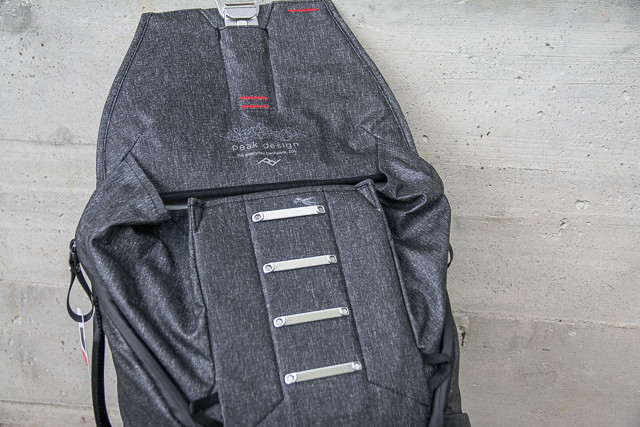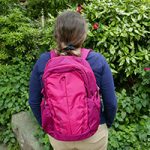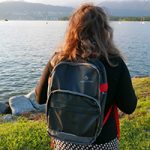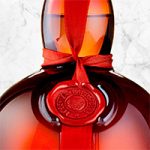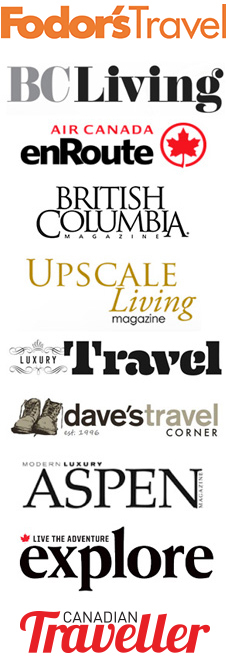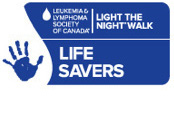As a photography hobbyist, I discovered Peak Design during their inaugural Kickstarter project, the Capture Clip. My first experience with their products was yet another Kickstarter project, the Slide.
Every one of their Kickstarter projects has been highly successful and they’ve become a popular brand among photographers. When Peak Design added a new product to the lineup, the Everyday Messenger bag, they managed to raise $4.9 million.
The Everyday Backpack, Tote and Sling is the latest series in the lineup (also via Kickstarter). I’ll be taking a look at the 20L Everyday Backpack in this post.
This backpack comes in two sizes and in two colours: 20L and 30L in Ash or Charcoal.
Most photography backpacks include some type of external waterproof shell that’s placed over the pack during inclement weather. Peak’s Everyday Backpack contains an ultralight, waxed Kodra synthetic canvas with a DWR (durable water repellent) coating that allows for weatherproofing. Even the zippers are waterproof.
Viewing the exterior of the bag shows that some thought went into its design. The top can be opened by pulling down on the metal ring that not only clips onto one of four bars but is also latched magnetically using MagLatch™, Peak’s patent-pending closure system, a great feature of this bag.
Latching the ring onto the topmost bar gets you another 8L of carrying capacity. The top of the bag contains a small internal pocket with a magnetic closure. The bottom section (where external straps for carrying items on the exterior of the pack are stored) also has a magnetic closure.
When it comes to accessing the contents of the backpack, there are three entry points: top, left and right side.
The right and left side access points also contain their own internal zippered pockets with smaller pockets in various sizes.
These internal pockets can be used for passports, memory cards, pens, charging cables, etc.
When one of the two sides are open, it’s pretty easy to access your gear. When the backpack is slung over your shoulder, its straps offer a bit of rotating movement via Axiel strap attachments.
The top of the backpack is the main access point. I can easily fit my 13-inch MacBook Air with room to spare in the zippered laptop compartment. A separate divider can stow a tablet. The 20L version can handle up to a 15” laptop; the 30L, up to a 16” laptop.
Peak Design’s given some thought towards security via an anti-theft zipper system, allowing you to more or less lock the zippers in the closed position. Though not 100% foolproof, would-be thieves will at least have more difficulty getting to your goods.
Material surrounding the zipper teeth help to keep water from entering when zipped.
The backpack’s straps aren’t overly padded but aren’t uncomfortable either. Though they’re not as padded as some of the other camera backpacks I’ve used in the past, they fit well but could do with extra padding for heavier hauls and longer treks.
There’s also a sternum strap that can be easily removed with one hand when not needed that tucks off to the side when not in use.
The waist strap is conveniently hidden on either side of the backpack. It doesn’t resemble a typical hiking backpack waist strap which tends to help offload the weight from your back, but it helps to avoid the bag from bouncing around.
You can secure a drone or even a sleeping bag or mat to the front of the pack via hidden straps stored on the bottom of the backpack.
A strap on one of the pockets can be used to secure a tripod. In my case, my 3 Legged Thing, Adrian, is not exactly a travel tripod and the only way I could get it to fit into the pocket properly is to put it into the configuration seen in the above photo. The strap is pulled out of the pocket around the legs and attaches to one of the Anti-Theft Zipper anchors.
On the opposite side of the tripod area (suitable for a water bottle) is a small Peak Design anchor that can be used for keys.
Now on to what makes this more of a camera backpack: the internal space. It’s fairly roomy, but to make it work with camera gear you need to incorporate some dividers. Peak Design includes three FlexiFold dividers with the Everyday Backpack for this purpose.
The FlexiFold dividers are attached to the inside of the backpack via velcro. They can be positioned horizontally or vertically. You can fold the dividers to make smaller pockets or leave them open to accommodate larger items.
This is where the real test comes into play. I’m always on the lookout for an ultimate camera bag, the one bag to rule them all. My ideal bag allows me to leave my Nikon DSLR body attached to my Nikon 70-200 f/2.8 lens with easy access.
With that in mind, does the Peak Design Everyday Backpack 20L live up to my needs?
Test Drive
When I first set up the FlexiFold dividers, I tried to stuff my camera and 70-200 lens into it through one of the side access points. As much as I tried, I could not close the zipper. I would have to say that the 30L would probably work, but the 20L is just a shy too narrow for both camera and lens.
That didn’t stop me though. I reorganized the FlexiFold dividers and then easily placed my camera and lens vertically though the top.
Not the ideal solution for my own use, but it works. A better solution: when I switch lenses, I can place the 70-200 horizontally without the camera and then switch back and forth. When not in use, I can then attach the 70-200 to the camera and store it vertically. I’ll have to test this theory, but since I regularly use the 70-200 lens, it will likely remain outside of the bag.
There’s room in there for my WD Passport Pro drive as well as memory cards, cables, chargers, travel adapter, Wi-Fi travel hotspot and more. If I need to toss in a shirt or something, I can squeeze it at the top and make use of that extra 8L capacity by attaching the top clasp to the highest mount point.
Another major point when considering a pack is overall fit. I’ve had camera backpacks that just don’t sit right on my back and can be pretty uncomfortable. Peak Design’s Everyday Backpack sits nicely on my back and doesn’t feel awkward.
Overall, the Peak Design Everyday Backpack is a great camera backpack. The FlexiFold dividers help organize your camera gear. The external material helps keep your gear clean and dry. The internal pockets are nice and being able to sort of “lock” the zippers to keep unwanted hands out can be useful too. The tripod pocket is more geared towards smaller travel tripods though.
Simply remove the FlexiFold dividers to use the bag as an everyday backpack. I can envision using this backpack more than my ThinkTankPhoto Streetwalker Pro which sits in a room collecting dust. Will the Peak Design Everyday Backpack replace my ThinkTankPhoto UrbanDisguise 35?
Only time will tell. It’s been really hard to find a camera bag that can fully replace my ThinkTankPhoto UrbanDisguise but the Everyday Backpack might just be it.
The 20L Everyday Backpack retails for US $259.95; the 30L model, US $289.95. Visit Peak Design online for more products and ordering information. I was sent the Everyday Backpack for reviewing purposes. Opinions, as always, are my own.
